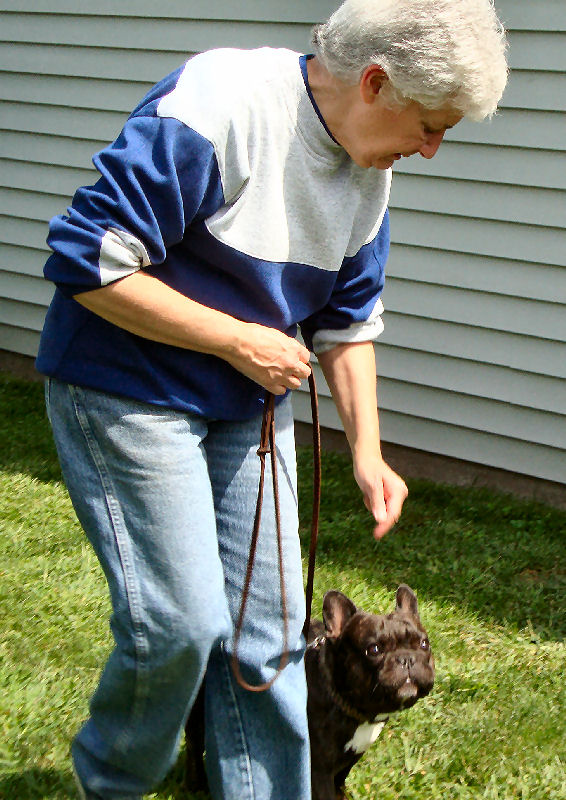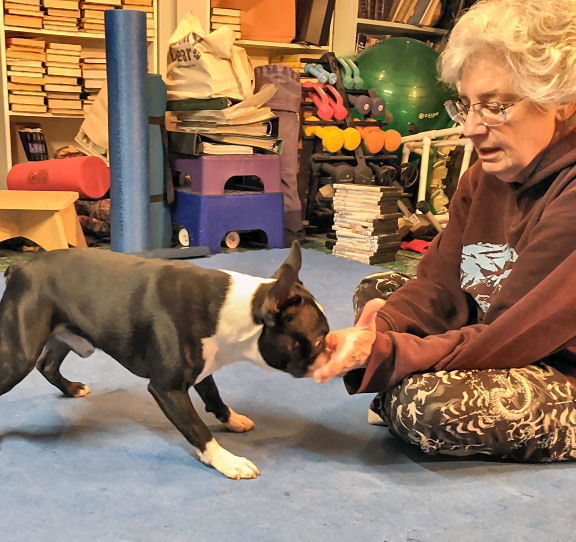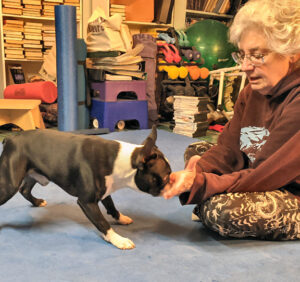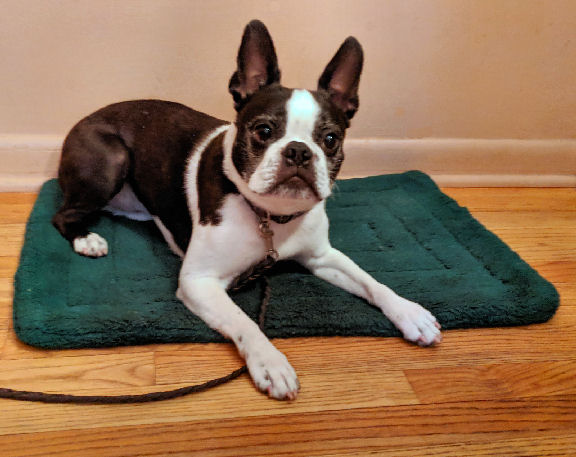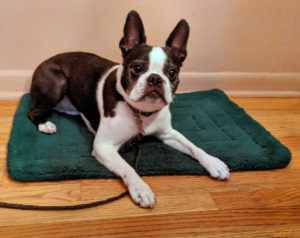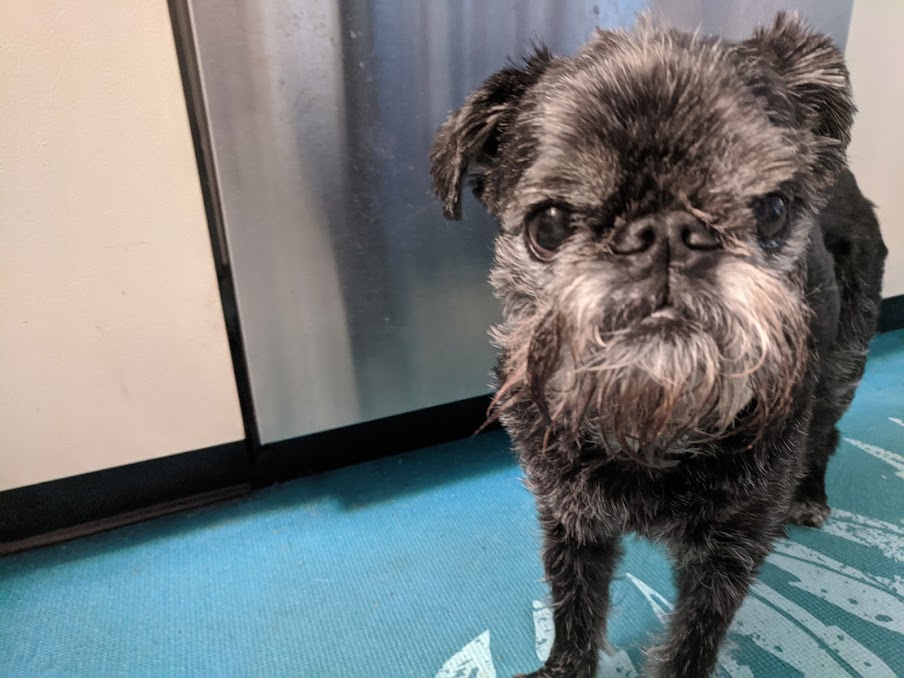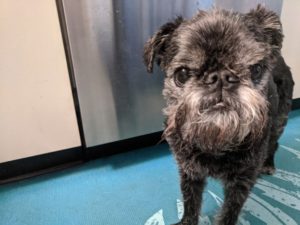3-Step Pattern Walking is the dog training game that fixes people’s number one complaint about their dogs – pulling on leash.
The longer your dog has been practicing pulling, the more ingrained the habit. And, honestly, most dogs like pulling – even if it makes them choke. The logic of it is simple. With a tight leash, the dog doesn’t have to pay attention to you. They know exactly where you are. Which frees up your dog to check out everything in the environment.
Changing the rules
Since habit is powerful, you’re not going to try to change it. Instead, 3-Step Pattern Walking gives you and your dog a new way of walking. Rather than breaking a habit, it’s a new way of going for walks.
We’re not going to lie. How long it takes to work, or whether it works at all, is entirely on you.You can’t skip ahead or move forward before your dog’s ready. But if changing the behavior matters to you, and you work the process, it works like a charm.
First step
Choose a three-word phrase you can easily remember. Most people use 1-2-3, or A-B-C. The most creative one has been “Coffee, Tea, Wine.”
Don’t make it specific to this dog, or use your dog’s name. Once you see how well this works, you’ll use it for every dog you have in your lifetime. Keep it simple and easy to say.
Once you’ve decided on your three word phrase, Get a bunch of high-value treats and your dog. Take five treats. Say only the third word in your sequence and give your dog a treat. Don’t ask your dog to do anything. They don’t have to sit, or look at you, or do anything. They’re getting a treat when they hear the word.
What you’re doing is making that third word the most valuable word in the world to your dog. EVERY SINGLE TIME they hear that word, they get a treat. No exceptions. And, at this point, no demands on their behavior.
Next Steps
Take another five treats and say the second and third words in your phrase. On the third word, give the dog a treat.
Most people can predict what’s coming next. Say the entire three-word phrase and give your dog a treat on the third word. It does help if you make that third word more exciting. Your dog has now gotten 15 treats when they hear your third word. That word is starting to sound pretty amazing to your dog.
That’s it for the first session. You’re just introducing the phrase and its value to your dog.
Do it again
The next session, do exactly the same thing. Your third word is starting to become a jackpot for your dog. If your dog’s head isn’t whipping around to look at you when you say that third word, stay here. Get better treats. We want your dog to perk up and be excited to hear that third word.
If your dog starts to drool at the second word, it’s time to move ahead. Dogs learn by the timing and placement of rewards. So it’s time to teach them where they’ll get that third-word reward. Hold the treat at the side of your leg. You’ll do the same thing, five treats each for word three, words two-three, and one-two-three. But the difference is the dog must come to the side of your leg to get the treat.
Time to move
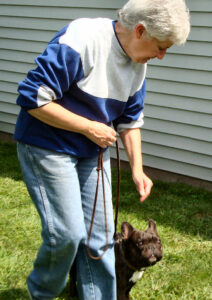
When your dog understands when (word three) and where (by your leg) they get rewarded, it’s time to put the pattern in motion. At first, one step for each word in the phrase. Keep your hands at your waist, just bringing the treat hand (the one closest to the dog) down on the third word. Don’t keep the treat in front of your dog’s nose. We’re rewarding, not luring.
When your dog reliably comes to the reward zone, or stays by your side as you walk and repeat the phrase, you can move on. Speed it up, take it out on walks.
Don’t expect your dog to pay attention to the game for more than a few minutes at a time. If you’re walking in your neighborhood, with lots of distractions, use it only for two or three repetitions. Before you start, get your dog’s attention with “Touch!” Don’t just start yelling your dog’s 3-word phrase when they’re yanking you down the street. Stop, get some focus, then start.
Practice makes a new habit
We’re overlying a new habit on your dog’s previous behavior with this foundation game of 3-Step Pattern Walking. It takes time to form a new habit, so be patient and consistent. The result is worth it. Making every outing with your dog a nice walk in the park.

